
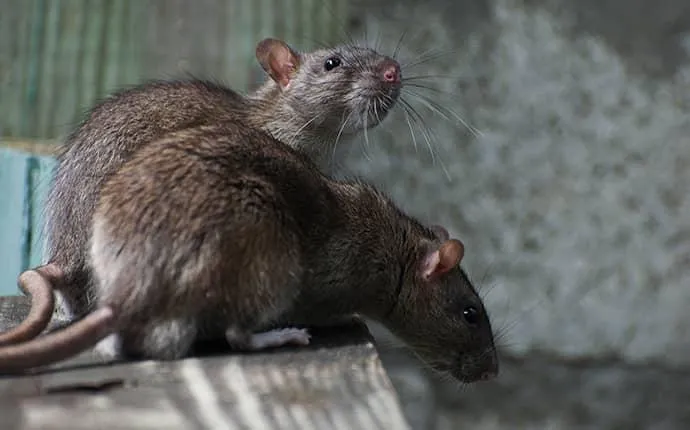
Your Guide to Getting Rid of Rats
Smart, social, and speedy—rats are impressive little rodents. But that doesn’t mean you want them as uninvited pests in your home. Around 20 million homes in the U.S. are invaded by rodents like rats every year, with spikes in colder months as the critters look for food and shelter inside. While not every North Carolina homeowner will deal with rats in their home, it’s not uncommon to find them in the Tar Heel State.
A-1 Pest Control has your guide to the common types of rats in North Carolina, as well as proper pest, wildlife, and rodent control to keep your place pest-free.
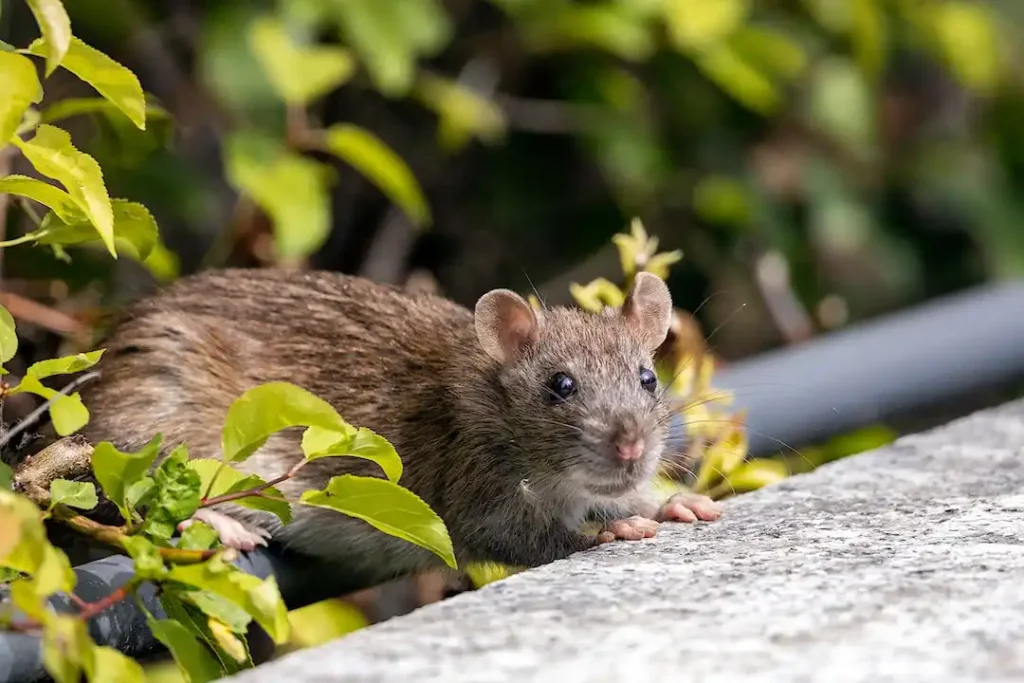
Types of Rats in North Carolina
There are over 50 known species of rats, but don’t panic: only about four of these are typically found in America. The most common types of rats in the U.S. are the Norway rat, Roof rat, Woodrat, and Marsh Rice rat.
Of these, only two are common in North Carolina: Roof rats and Norway rats.
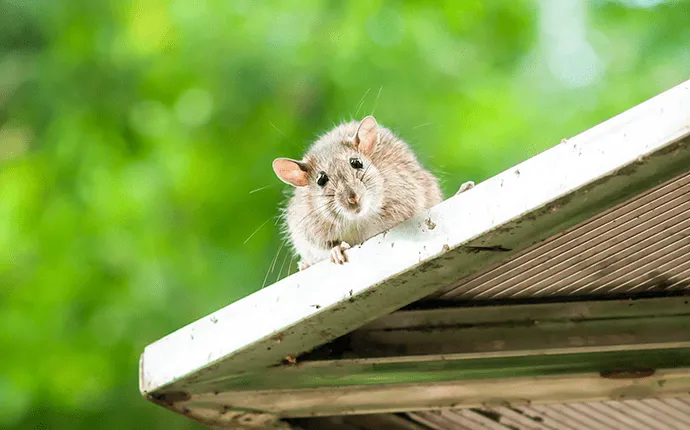
Roof Rats
Roof rats are appropriately named; they have excellent climbing abilities that allow them to easily access the roofs of buildings. These rodents are dark brown or black in color with some gray hairs peppered in; their underbelly is lighter in color. They have long, thin bodies with a delicate build and grow to between 6-8 inches in length. Their long scaly tail adds another 6-8 inches to their total body length. Pointed noses, large ears, and large dark colored eyes are also characteristics of roof rats.
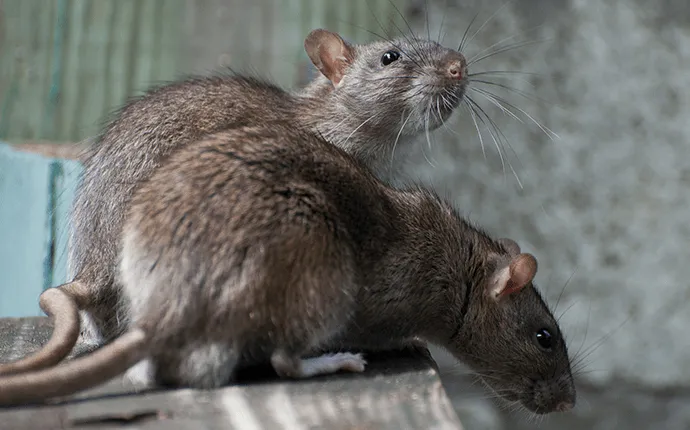
Norway Rats
Unlike roof rats, you’re not likely to find Norway rats up high. Their heavy bodies don’t make them agile climbers. Instead Norway rats typically enter buildings at the ground level, sometimes burrowing beneath the structures. They are brown or gray in color, have a shaggy appearance, and have long “dense” bodies that grow to between up to 9 ½ inches in length. Their bi-colored tails add another 6-8 inches. To distinguish them from roof rats, look for blunt noses, small ears, and protruding small black eyes.
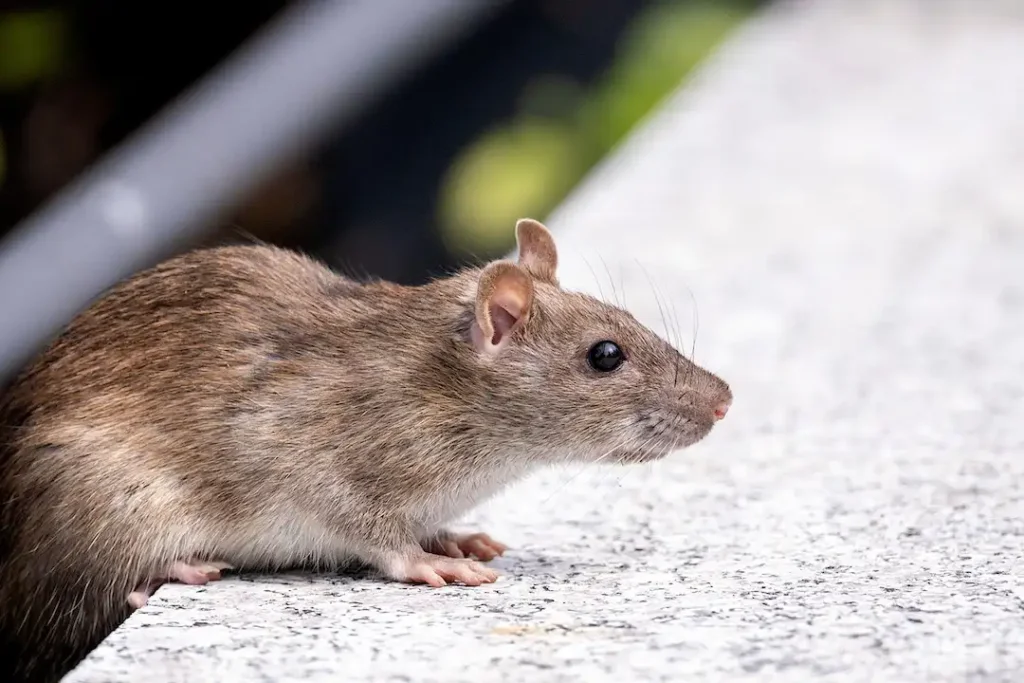
Rat Identification:
Roof Rats
So-named for their excellent climbing ability, roof rats are usually found on the roofs of buildings, and gain access through this higher ground.
To identify a roof rat, look for characteristics like:
- Dark brown or black in color with some gray hairs
- Lighter-colored underbelly
- Long, thing bodies
- Delicate build
- Six- to eight-inch-long bodies
- Six- to eight-inch-long tails
- Pointed nose
- Large ears
- Large, dark colored eyes
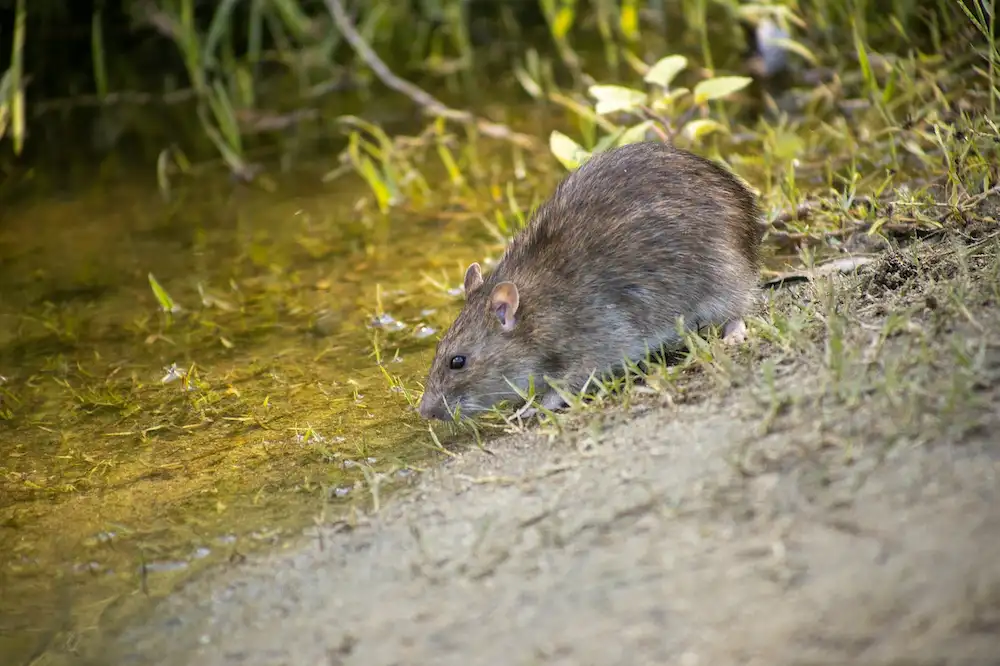
Rat Identification:
Norway Rats
Norway rats are known for their heavier-builds, which means they don’t have the same agility or climbing skills of their roof-rat counterparts. Instead, they usually burrow into and beneath buildings, and are found closer to the ground floors and foundations.
To identify a Norway rat, look for identifying characteristics like:
- Brown or gray in color
- Shaggy appearance
- Heavy builds
- Bodies around nine to 10 inches in length
- Tails of around six to eight inches
- Blunt nose
- Small ears
- Small, protruding dark eyes
These types of rats prefer to dwell inside when possible, rather than make their homes outside, so keep your eyes peeled for them making a home in your attic or basement, or in your walls.

What to Do if You Have Rats In Your Home?
If you have found rats in your home or simply suspect that they may be in your home, the best course of action is to call in pest control professionals in North Carolina to be sure they are humanely removed in a way that is safe for you and your family and will help to avoid the problem recurring in the future.
At A-1 pest control, our rodent control services include a thorough inspection of the property, and a custom treatment plan designed to fit your space and needs. Then, we work with your schedule to start treatment quickly and efficiently.
Once any current problems have been addressed, our North Carolina rat control experts can guide you through best practices for keeping your home pest free: from sealing up potential entry points to cleaning up crawlspaces and landscaping.
FAQs & Facts
Rat Facts
Are rats dangerous?
Yes, rats are dangerous to people and property. They contaminate food sources and have the ability to spread many diseases and bacteria including Lymphocytic choriomeningitis (LCM), salmonellosis, dysentery, and leptospirosis; along with introducing parasites like fleas, mites, and ticks.
They’ll also contaminate and/or damage belongings, building materials, and structures with their saliva, urine, and feces.
What damage can rats cause?
In addition to the damage mentioned above, rats have very powerful jaws and sharp front incisors. In order stop their teeth from overgrowing they chew on anything and everything, constantly.
Rats cause significant structural damages by chewing through pipes, flooring, drywall, cabinets, electrical wires, and insulation.
They will damage personal property by chewing through clothing, furniture, books, linens, and similar items. Also, Norway rats build burrows underneath of sidewalks, decks, garages, foundations, and sheds, causing damage to them in the process.
In addition to damaging things by chewing on them, rats damage furniture and walls by leaving grease and dirt marks on them as they move along their surface.
How do you know if you have rats or other rodents?
One of the best ways to tell whether rats or another species of rodent such as mice have invaded your property is by the droppings that you find. Mouse droppings are the size of a grain of rice, are dark in color, and each end is pointed. Rat droppings are larger in size (3/4 inch) are dark in color, and they have blunt ends. Other differences between rats and mice include:
- Size – Adult rats are much larger in size than adult mice.
- Tails – Rats have thicker tails that are scaly and devoid of hair whereas mice have thin tails that are covered in a light layer of fur.
- Ears – Relative to their heads, rat ears are smaller than mouse ears.
If you are certain that it is in fact rats that have invaded your home, one of the best ways to determine if they are Norway rats or roof rats is by their location. Roof rats are typically located in attics spaces and in upper floor levels, while Norway rats are typically found inhabiting basement and first floors.
How do you get rid of rats?
If rats have infested your home or business, getting rid of them without the help of a pest control company will be a challenge. DIY rat control often fails because property owners don’t use the right tools or they don’t use them the right way. Another reason DIY fails is because the source of the problem is never identified and corrected. For effective rat control that not only eliminates the existing rat activity but also prevents future infestations, A-1 Pest Control is the smart choice. Our team of pest control technicians are well-versed in rat behavior and control methods. They have the knowledge and tools to get rid of rats and to keep them from coming back. Visit our rodent control page to learn more about this effective service or contact us to discuss your situation!
Can rat infestations be prevented?
You can keep rats out of your home or building but it takes time and effort. Implementing a pest management program is critical but you should also follow the rat prevention tips listed below.
- Fix any openings on the exterior of your structure. This includes cracks, gaps around utility entrances, and holes in the roof.
- Seal areas around windows and doors with caulking if possible. You should also install door sweeps, and keep doors closed when not in use. This applies to garage doors and basement doors too.
- Place tight-fitting caps on your home’s chimneys, make sure vent covers are secure, and repair holes found along the roof line.
- Remove potential food sources – inside and out. Trash should be emptied often and stored outside in dumpsters or cans with tight-fitting lids. Pet food should not be left out overnight and you might consider removing bird feeders as they attract rats and other wildlife besides birds. Store food in glass containers and do not leave food on the counter. Dirty dishes should not be left in the sink long and never overnight.
- Trim tree branches away from the roof so that they cannot provide a bridge to the structure.
What types of rats are most common in North Carolina?
Like other rodents, rats are partially reliant on us for their survival. Their close proximity to people ensures that their basic needs (food, water, and shelter) are provided for. Unfortunately, because of their dependency, both Norway rats and roof rats are a common problem for property owners in North Carolina.
What diseases do rats carry?
The majority of homeowners who worry about rats are most concerned about the potential diseases they carry.
Norway rats can carry typhus, bubonic plague, and Weil’s disease; and roof rats have been known to carry leptospirosis, salmonellosis and rat-bite fever. Both species can carry toxoplasmosis, and trichinosis.
They can also contaminate food and building materials with their saliva and urine, spreading diseases that way.
How many different types of rats are there?
There are more than 50 subspecies of rats known, but only four types of rats are commonly found in America: the Norway rat, Roof rat, Woodrat, and the Marsh Rice rat.
Are rats social or do they prefer to be solitary?
Rats prefer to be with other rats, and tend to live together in the wild in large groups, forming tight family bonds.
What’s a group of rats known as? A mischief!
What attracts rats?
Rats are commonly attracted to odors emitted by pet waste, food waste, and garbage cans. In some cases even bird feeders and unharvested nuts can draw them in.
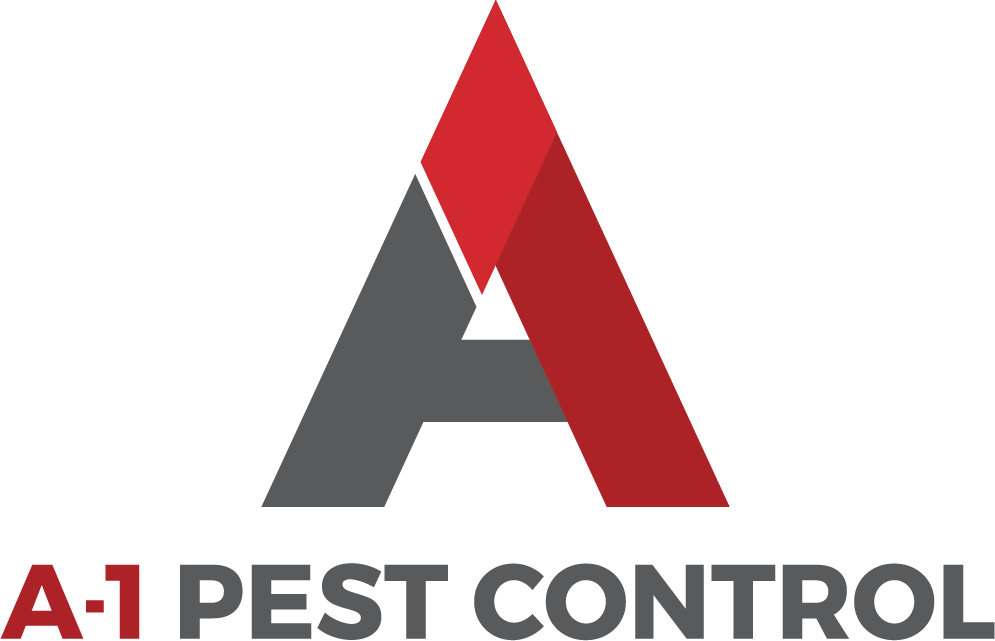
About A-1 Pest Control Company
For decades, A-1 Pest Control has been providing rodent control to Lenoir, Hickory, Mooresville, West Jefferson, Blowing Rock, and the surrounding areas. Our services range from rodent removal and pest control, to wildlife removal, to radon mitigation and more.
Each and every member of our team is dedicated to consistent training and continued education, and skilled in the latest in pest control technology and strategies. We treat every client with the same respect, consideration, and communication we would want to be treated with – every client is a member of our community.
To schedule a free pest inspection today, call 800-532-PEST or fill out the form below!

